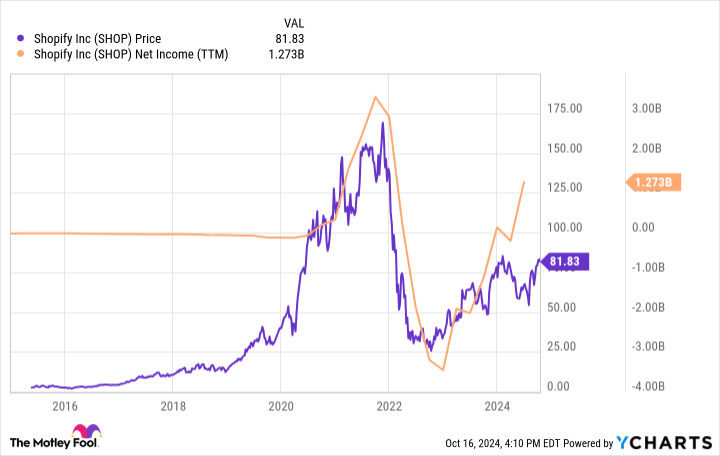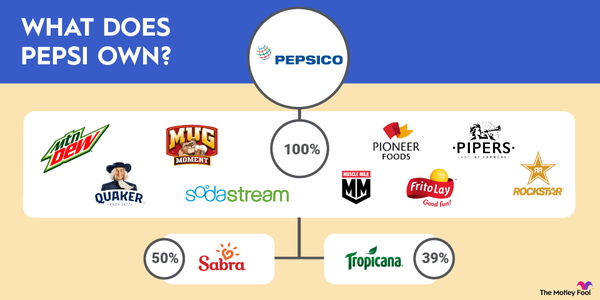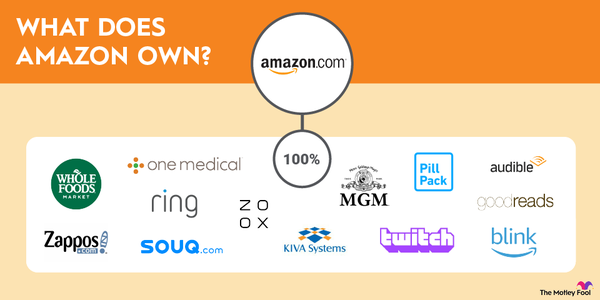Shopify (NYSE:SHOP) is a leading global commerce company that provides merchants with a portfolio of essential internet infrastructure solutions. The company's platform features hardware, software, and financial services. It empowers millions of businesses worldwide to provide customers with a better online shopping experience.
The company was formed in 2006 when co-founder and current CEO Tobias Lutke wanted to open an online store for snowboarding equipment. He didn't like the existing e-commerce product offerings on the market at the time. That led Lutke to tap into his computer programming background to build the platform that would become Shopify.
Shopify has grown into an industry leader with multiple products and services to meet the needs of merchants. Since its inception, the company's platform has supported $1 trillion in global commerce.
The commerce company has two revenue streams:
- Subscription solutions: The company earns recurring revenue by enabling merchants to sell products and services to their customers on a recurring basis. It generated 27% of its revenue from providing subscription solutions during the first half of 2024.
- Merchant solutions: Shopify provides a variety of solutions to merchants. It generates revenue from payment processing fees and currency conversion fees (Shopify Payments), referral fees from its strategic partnerships, and Shopify Capital. One of those strategic partnerships is with supply chain technology company Flexport, which acquired Shopify Logistics in 2023. Merchant solutions supplied 73% of the company's revenue in the first half of 2024.
The company is investing heavily to develop and roll out additional solutions to support commerce. For example, Shopify Magic is a suite of artificial intelligence (AI)-enabled features to assist merchants with running their businesses. Meanwhile, it integrated its buy now, pay later offering (Shop Pay Installments) into its point-of-sale solutions to enable retailers to provide this option online and in-store.
Shopify has grown rapidly over the years. However, it believes that the opportunities ahead are still very large and growing, so it still has a long growth runway.
Its growth potential likely has investors excited about the company and interested in adding Shopify to their portfolio. Here's a step-by-step guide on how to invest in the stock and some things to know before adding Shopify to your portfolio.
How to invest
How to buy Shopify stock
To buy shares of Shopify, you must have a brokerage account. If you need to open one, here are some of the best-rated brokers and trading platforms. This step-by-step guide will show how to buy Shopify stock using the five-star-rated platform Fidelity.
Fidelity makes it easy to buy stocks. Its website offers a video tutorial and a step-by-step guide. Here's a screenshot showing how to place a stock trade with Fidelity:

On this page, you would fill out all the relevant information, including:
- The number of shares you want to buy or the amount you want to invest to purchase fractional shares.
- The ticker symbol (SHOP for Shopify).
- Whether you want to place a limit order or a market order. The Motley Fool recommends using a market order because it guarantees you buy shares immediately at that market price.
Once you complete the order page, click the "Place Order" button at the bottom and become a Shopify shareholder.
E-commerce
Should you invest?
Should I invest in Shopify?
Before buying shares of Shopify, investors need to determine if the stock is a good fit for their portfolio. Here's a list of reasons why you might want to invest in Shopify:
- You want to own stocks directly and have time to follow the company.
- You want to invest in a fast-growing company with high stock price appreciation potential.
- You understand how Shopify makes money.
- You like the company's business model and focus on providing commerce solutions.
- You don't need dividend income.
- You like that Shopify is a founder-led company.
- You think the company's decision to sell its logistics business to Flexport is a smart move, and like that it retained an equity interest in that company.
- You think the company's move into AI in retail will be a big growth driver in the future.
- You understand that Shopify isn't consistently profitable.
- You like that the company generates free cash flow and has a cash-rich balance sheet.
On the other hand, there are many reasons why an investor might decide that Shopify stock isn't right for their portfolio, including:
- You don't want to own stocks directly or have time to follow the company.
- You're near retirement and need dividend income.
- You're concerned about how a recession might affect the consumer discretionary industry and the merchants utilizing Shopify's platform.
- You want to invest in companies more consistently profitable than Shopify.
- You're concerned about the risk that shares could lose value.
- You don't think AI will be a major growth driver for the company.
- You don't like the company's decision to sell its logistics business or its investment in Flexport.
Supply Chain
Profitability
Is Shopify profitable?
Profit growth is one of the most important drivers of stock price growth over the long term. As of late 2024, Shopify wasn't consistently profitable on a generally accepted accounting principles (GAAP) basis. However, the company did generate positive non-GAAP earnings and cash flow.
In the first half of 2024, Shopify reported $3.9 billion in revenue, a 22% increase from the first half of 2023. While the company reported a gross profit of $2 billion (29% higher than in the same period of 2023), it delivered a net loss of $102 million (an improvement from the $1.2 billion net loss it posted in the year-ago period). On a more positive note, Shopify reported $171 million in net income in the second quarter of 2024).
Shopify has delivered sustained and growing profit on a non-GAAP basis. Its gross profit has routinely topped $900 million in each quarter over the past year, while its adjusted operating income has been more than $200 million in every quarter during that period.
The company was also strong and improving free cash flow. It delivered its fourth straight quarter of double-digit free cash flow margin in the second quarter of 2024. That added to its cash balance, which ended the period at $5 billion (and $4.1 billion of net cash after considering its outstanding convertible notes).
Changes in profitability have a significant correlation with the movement of Shopify's stock price:

As that chart shows, the company's profits initially soared following the COVID-19 pandemic, fueling its rising stock price. However, profits fell off a cliff in 2022, which weighed on the share price. On a more positive note, they've bounced back in recent quarters, which has driven a recovery in the stock price.
Given the impact Shopify's profitability has on its stock price, investors need to watch this metric closely. If the company can return to growing earnings briskly, its stock price could eventually rise to new heights.
Dividends
Does Shopify pay a dividend?
As of late 2024, Shopify didn't make dividend payments to its shareholders. The company has never declared a dividend. It also doesn't expect to pay a dividend in the near future. Instead, Shopify retains its earnings to fund its operations and expand its business.
The company's fluctuating profitability also affects its ability to return money to investors by paying dividends and repurchasing shares. As the company matures and profits stabilize, it could eventually return cash to investors by initiating a dividend.
ETF options
ETFs with exposure to Shopify
Instead of actively investing in Shopify by purchasing shares directly, you also can passively invest in its stock through a fund that holds shares. One way to do that is through an exchange-traded fund (ETF) with a meaningful allocation to Shopify stock.
As of late 2024, 76 ETFs held more than 13.7 million shares of Shopify, according to ETF.com. The biggest holder was the Ark Innovation ETF (ARKK 0.86%), an ETF managed by famed investor Cathie Wood. The fund held 5 million shares. Shopify was its ninth-largest holding in late 2024 at roughly 4% of its total allocation. Meanwhile, another ETF managed by Cathie Wood had the highest allocation to Shopify. It was the largest holding of the Ark Fintech Innovation ETF (ARKF 0.84%) at 9.2% of its holdings. Given their relatively large allocations to Shopify, either Ark Innovation or Ark Fintech Innovation would be an option for investors seeking to gain some passive exposure to Shopify stock.
Will its stock split?
Will Shopify stock split?
Shopify completed its first (and only as of late 2024) stock split in June 2022. The company completed a 10-for-1 split of its stock. At the time the company announced the split, shares traded at a pre-split price of more than $600.
The company didn't have another upcoming stock split as of late 2024. It likely won't split its stock anytime soon. Shares traded in the $80s towards the end of 2024, not too far above their post-split price. The company will probably wait for shares to gain in value before completing another split since the recent price is accessible to most investors.
Related investing topics
The bottom line on Shopify
Shopify is a fast-growing company. It has quickly become a leader in providing commerce solutions to merchants. It has a long growth runway ahead, which should enable Shopify to grow its earnings (and stock price), making it a potentially compelling investment opportunity for growth-focused investors.
However, Shopify stock isn't for everyone. It's not consistently profitable and doesn't currently pay dividends, making its shares more volatile. Investors need to carefully consider whether they want to invest in Shopify before adding shares to their portfolios.
FAQ
Investing in Shopify FAQ
Is Shopify publicly traded?
Shopify is a publicly traded company. It completed its initial public offering in May 2015 on the Toronto and New York Stock Exchange. It trades under the stock ticker symbol SHOP.
Who invests in Shopify?
Many institutions and retail investors own shares of Shopify. As of late 2024, the top five Shopify shareholders were:
- Baillie Gifford & Co.: 55 million shares (4.6% of the outstanding shares) worth $3.6 billion.
- Capital World Investors: 48.7 million shares (4%) worth $3.2 billion.
- The Vanguard Group: 45 million shares (3.7%) worth $2.9 billion.
- T. Rowe Price Associates (NASDAQ: TROW): 41.5 million shares (3.4%) worth $2.7 billion.
- Morgan Stanley (NYSE: MS) Investment Management: 40.5 million shares (3.3%) worth $2.7 billion.
Has Shopify ever paid dividends?
As of late 2024, Shopify had never paid a dividend. The company also doesn't intend to declare a dividend in the near future. Instead, Shopify plans to continue retaining its earnings and cash flow to fund its operation and expansion.
Matthew DiLallo has positions in Ark ETF Trust - Ark Innovation ETF and Shopify. The Motley Fool has positions in and recommends Shopify. The Motley Fool has a disclosure policy.






































































































































































































































































































































